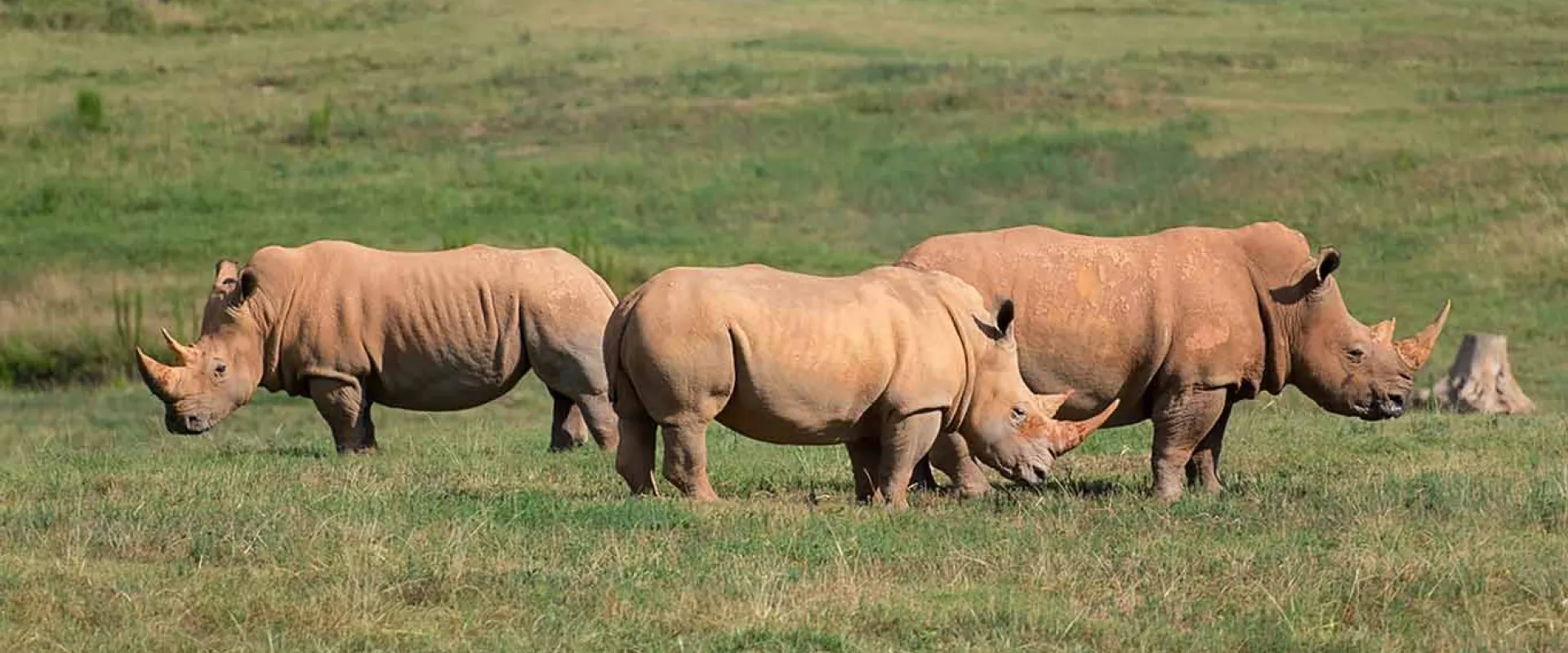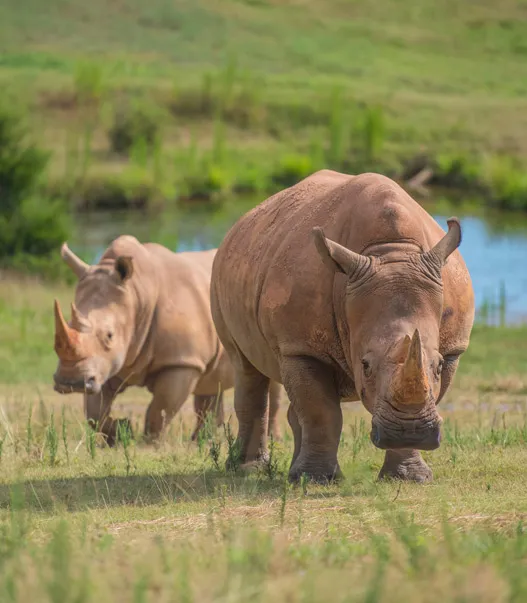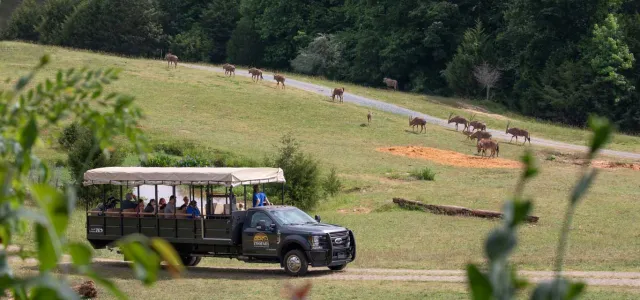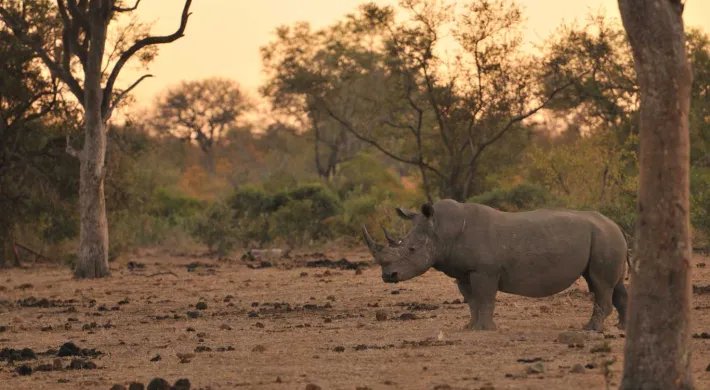Did you know rhinos can reach speeds of 30 mph for short bursts? Learn more about southern white rhinos.
The rhinos participate in their own preventative health care through training. The keepers and veterinarians can draw blood, perform ultrasounds, and check their teeth safely because of this training. Living on a 40-acre mixed species habitat provides ample space to roam and other species to interact with.
Rhinoceros are facing extinction across the world due to poaching and habitat loss. The North Carolina Zoo is helping rhino conservation efforts in Namibia by equipping conservation staff on the ground with technology to more easily collect information on threats to rhinos, which in turn enable protected area managers to make better informed decisions about how best to protect wildlife. In addition, zookeeper-led events like Bowling for Rhinos raise funds for rhino conservation efforts all over the world. You can read more about the Zoo’s work on wild rhinos below, under related resources.
- They are more social than other rhinos.
- All local rhinos poop in the same spot (a "midden"), and by sniffing the pile, rhinos learn details about the other area rhinos.
- Wallowing in mud holes covers them in mud that acts as a sunscreen and insect repellent.
- Poor eyesight, but good senses of smell and hearing.
- Extinct in Wild (EW)
- Critically Endangered (CR)
- Endangered (EN)
- Vulnerable (VU)
- Near Threatened (NT)
- Least Concern (LC)
- Not Evaluated (NE)




